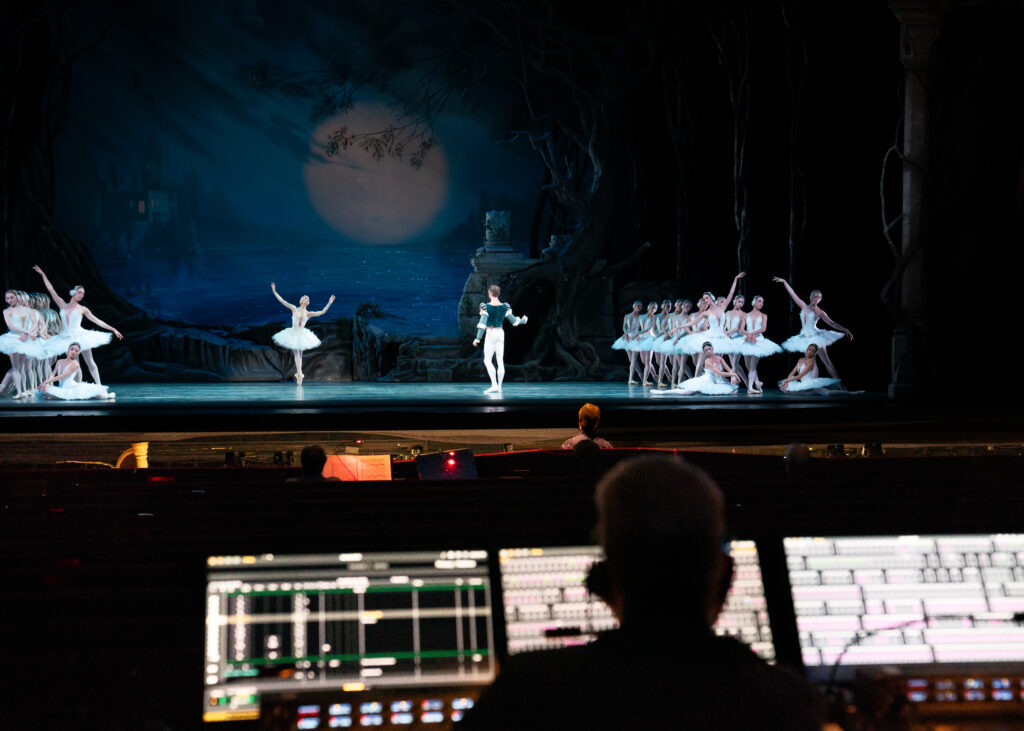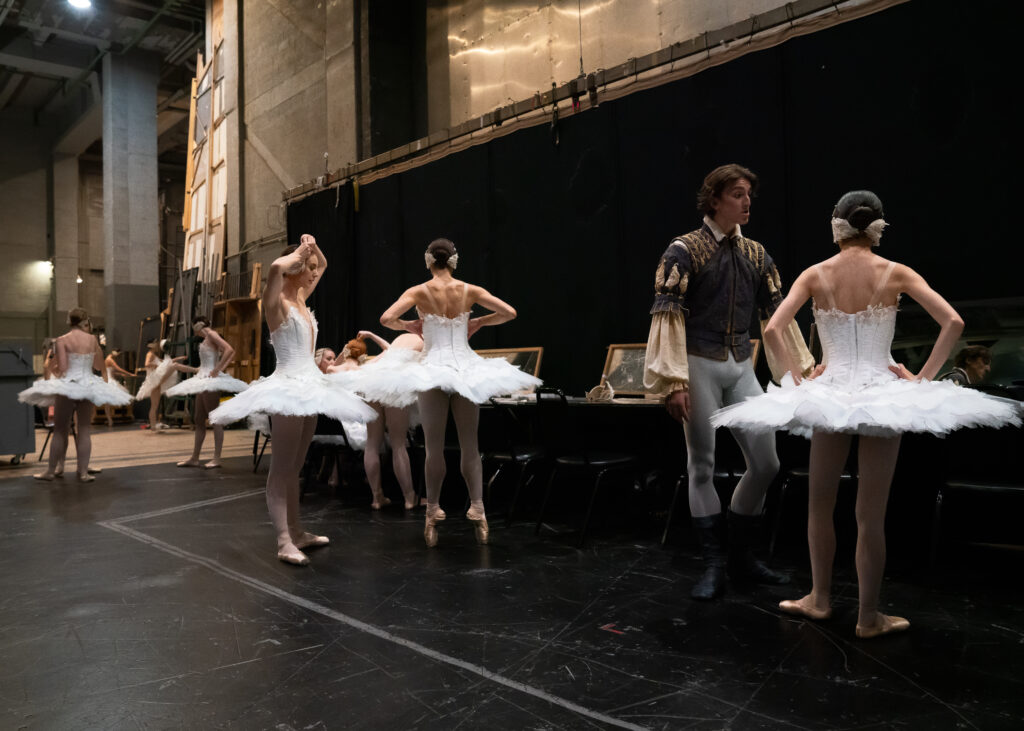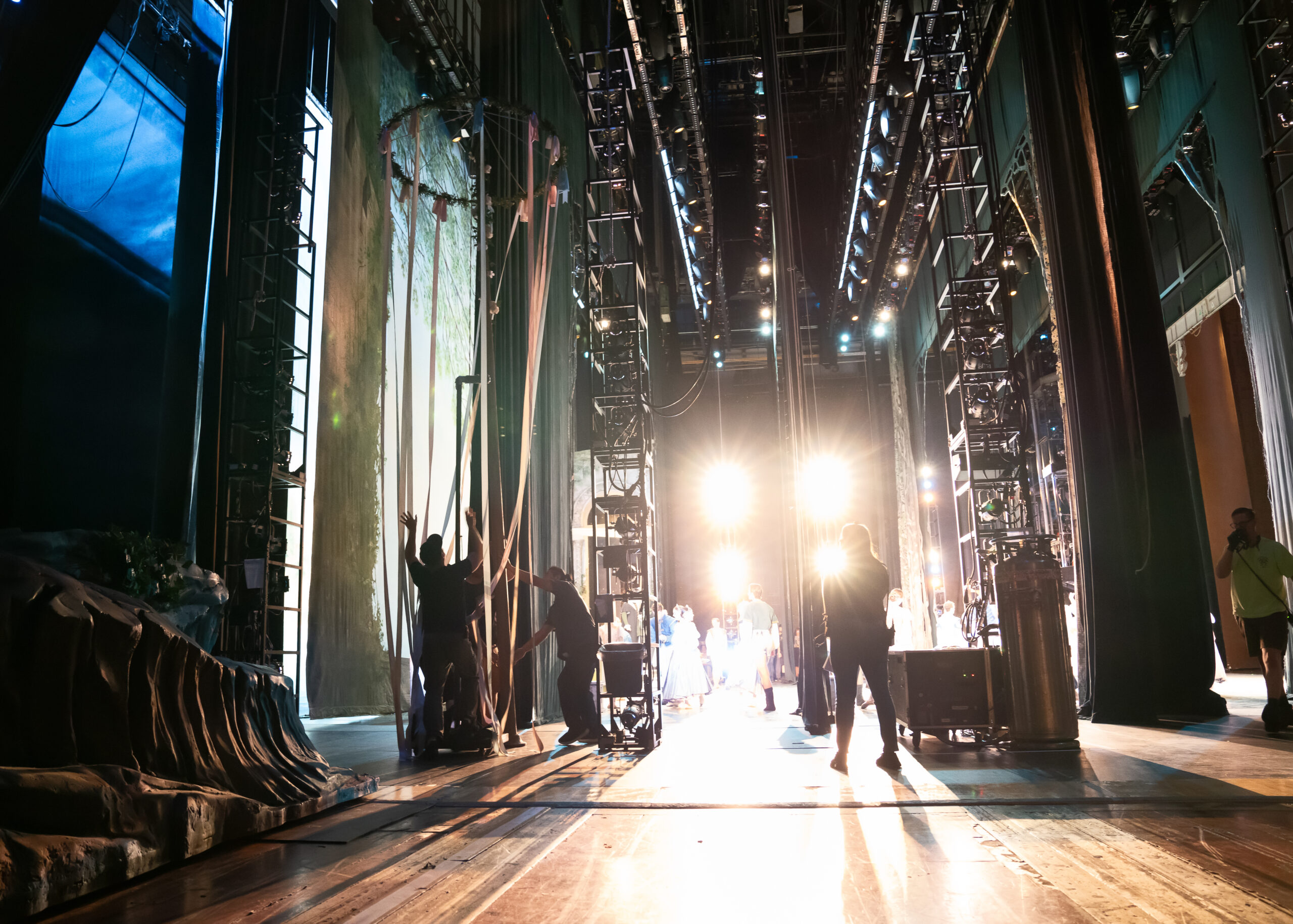How American Ballet Theatre’s Production Team Makes Magic Happen Onstage During Swan Lake
When the curtain rises on American Ballet Theatre’s Swan Lake, the audience falls under the spell of the dancing, tragic romance, and moonlight. What they don’t see is the backstage sorcery that makes the magic happen, an elaborate choreography carried out by an ace crew of nearly 80 costumers, dressers, makeup artists, carpenters, property masters, lighting operators, and stagehands—the unsung heroes of the story. “They’re some of the best in the world,” says Vincent Roca, ABT’s head of production, “and they care so deeply about the work that goes onstage.” Here’s a look behind the scenes during a recent Swan Lake tech rehearsal, putting the team—and some of their secrets—in the spotlight.
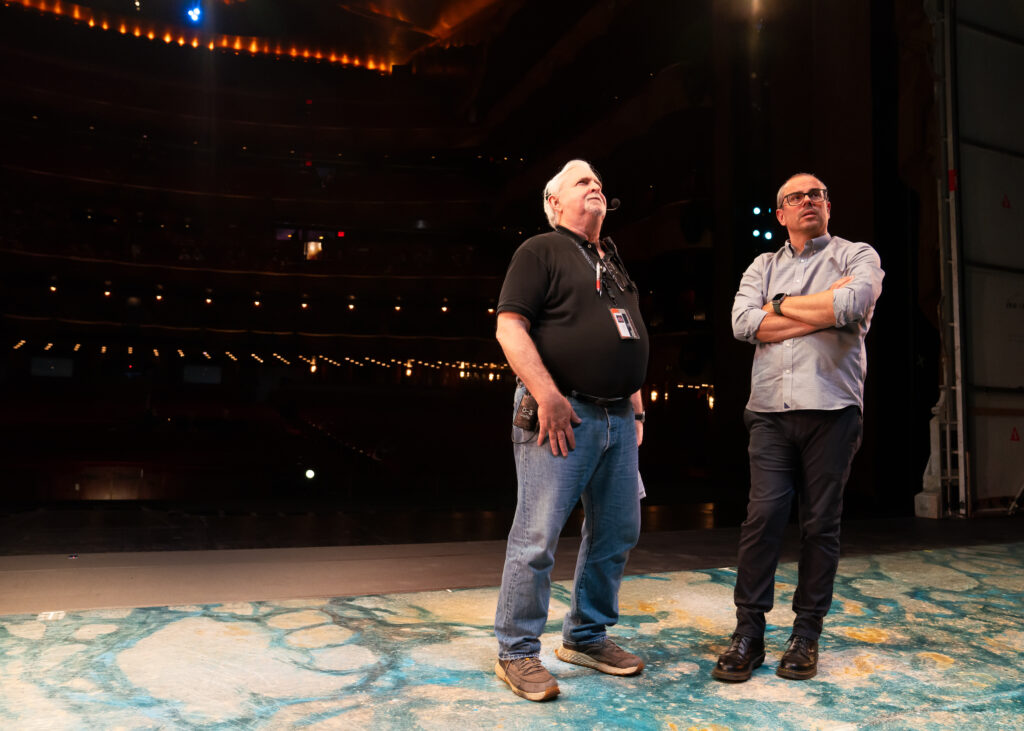
“The first time we saw the maypole, we went: ‘People are supposed to carry that?’ ” says production stage manager Danielle Ventimiglia of the 20-foot-high, 50-pound wood pole, the centerpiece of a festive dance for Prince Siegfried’s birthday. The pole has no base and no wheels, so four male peasants grasp it by metal handles and carry it onstage, and two hold it steady during the dance. The pole is too tall for the ABT studios—in fact, it was originally too tall to fit onto the stage and had to be shortened—so the cast can only practice with it in the tech rehearsal.
Wig and makeup supervisor Rena Most allows 45 minutes for creating von Rothbart’s ogreish alter ego, dubbed “Lakeside von Rothbart.” She starts by positioning the horns, which are affixed to a silicone bald cap, then covers the dancer’s head and neck with a custom-made latex costume cap and secures it all the way around with glue. “The cap rarely comes unglued, but sometimes we get little bubbles, or the horns shift,” Most says. “Last season, one of the horns fell out of the silicone base and was flapping.”
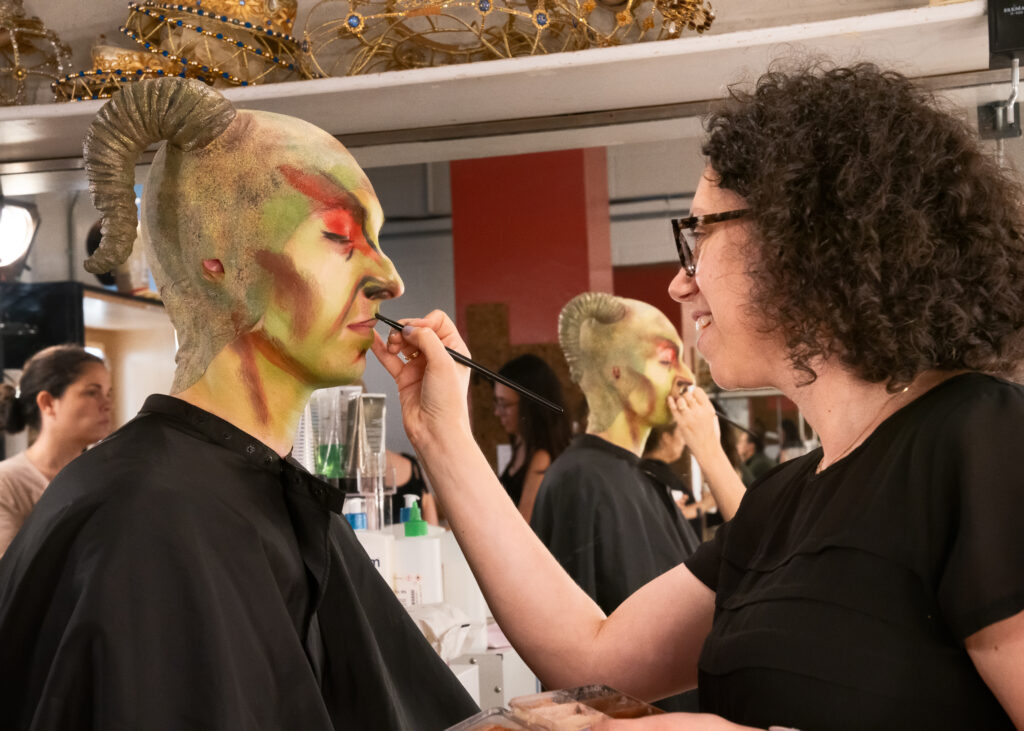
Other than two earholes, von Rothbart’s cap is sealed and unventilated—and hot. “At the end of the show when we take it off, sweat pours out,” says corps dancer Cy Doherty. “It’s disgusting!”
The makeup for everyone but von Rothbart is uncomplicated, so Most and three assistants can cover each show. (In contrast, ABT’s elaborate Sleeping Beauty needs a team of 14.)
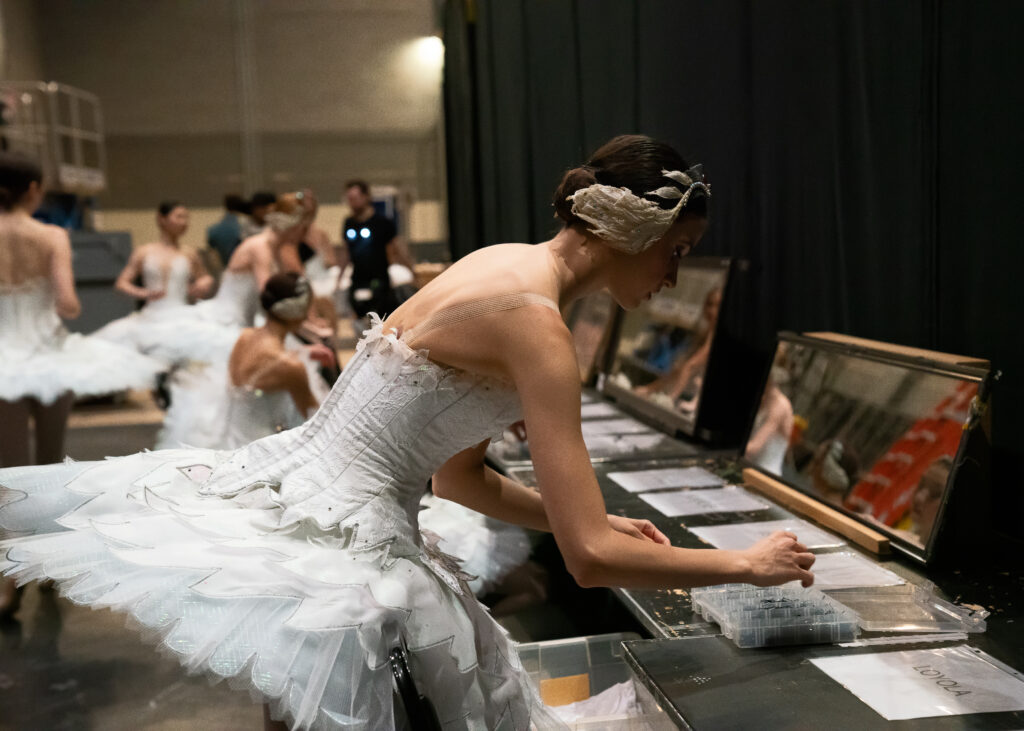
How many pins does freelancer Sarah Levine use to secure the Queen Mother’s wig and headpiece? “As many as it takes!” she says. The wig, crown, and costume are heavier than they look, says character artist and ABT’s director of repertoire Nancy Raffa, and they alter her center of gravity. “I have a specific warm-up for Swan Lake, to prepare my body to support the weight and do the pantomime,” says Raffa.
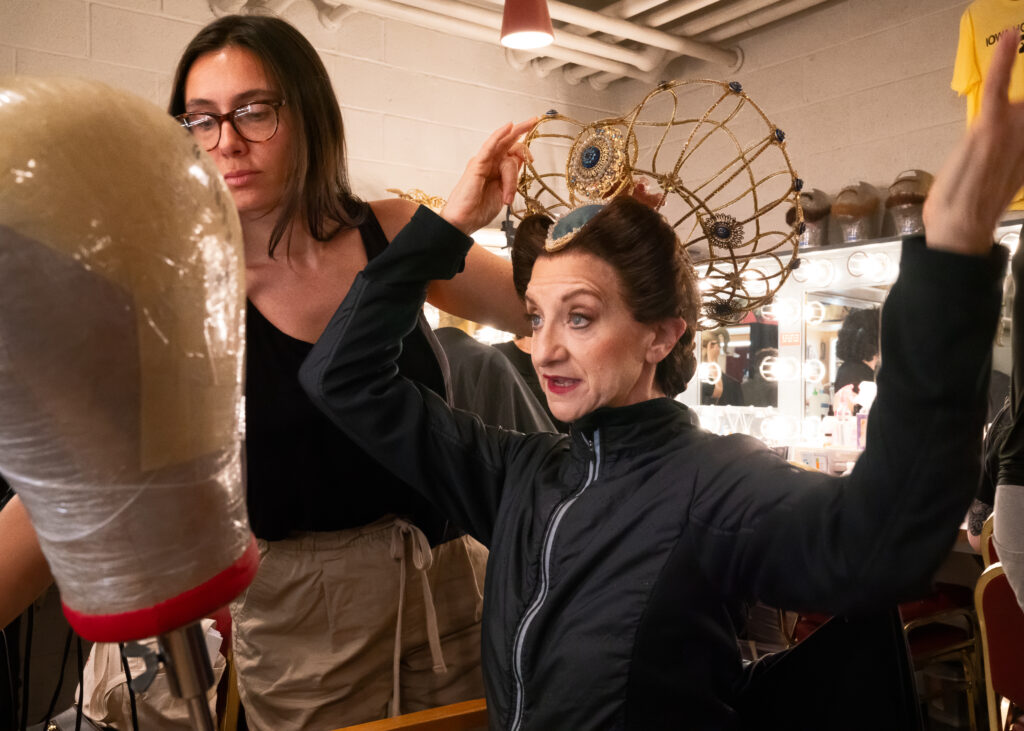
Even after 20 years of performances at the Metropolitan Opera House, technical director Richard Koch meticulously maps out the scenery, carpentry, and electrical rigging every season. “Maybe the building has changed, or the Opera made changes during their season, or a flying pipe for hanging scenery was removed because of mechanical problems,” he says, “so I have to go back and look at how that affects the whole production.”
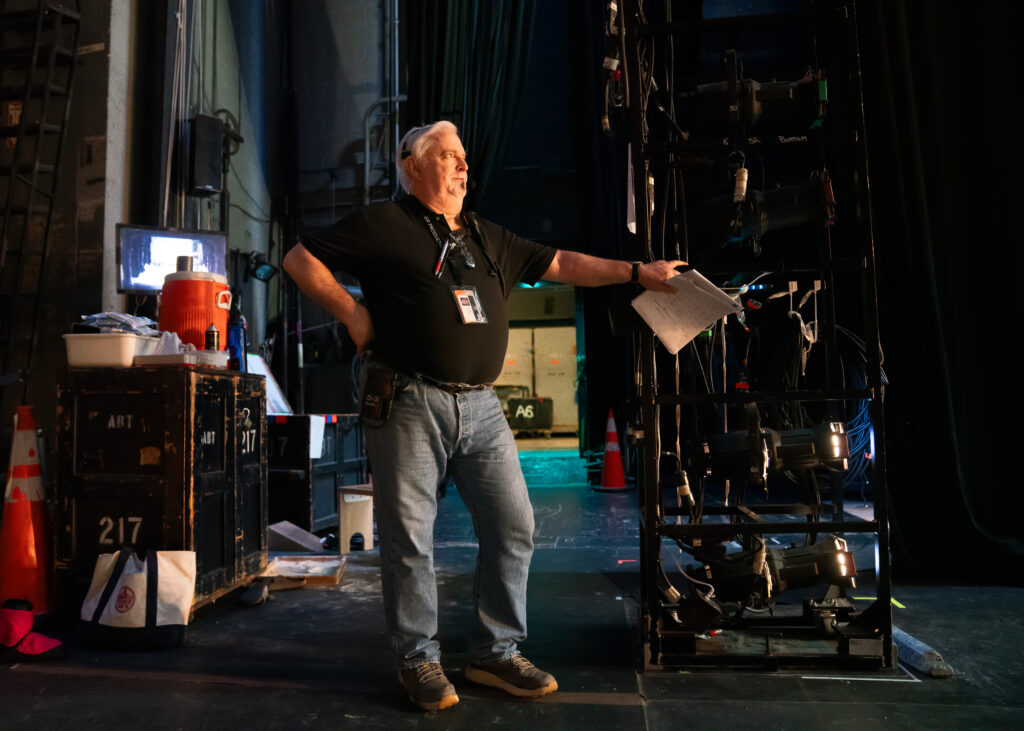
The cast includes 36 company dancers and 14 supernumeraries—but requires more than 300 costumes, dozens of quick changes, three backstage changing booths, 10 dressers, and a strategic plan that wardrobe supervisor Tomoko Ueda-Dunbar organizes on spreadsheets. “My job is a big puzzle,” says Ueda-Dunbar. “That’s the challenge and also the fun part.”
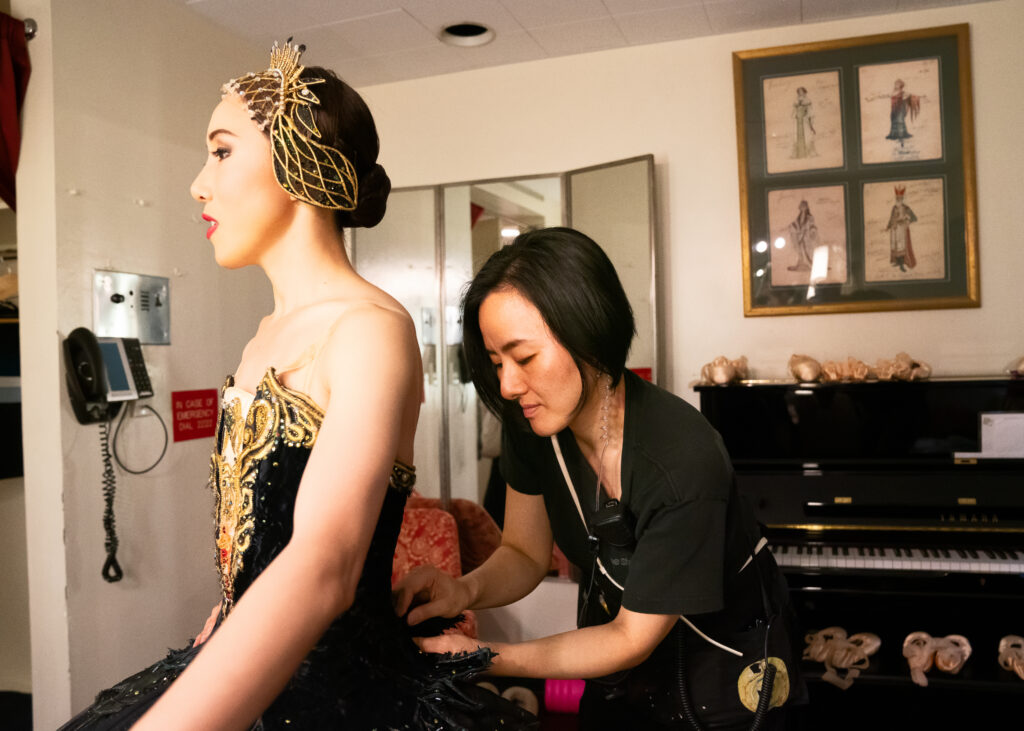
During intermission, the dancer can put on her Odile costume in her dressing room, but her quick change back into Odette is a three-minute backstage sprint aided by a dedicated dresser, hair and makeup artists, and stagehands. “They wipe my sweat, make sure I’m hydrated, powder my face, snip the thread from my pointe shoes, and light the backstage crossovers,” says principal dancer Hee Seo. “They perform with me.”
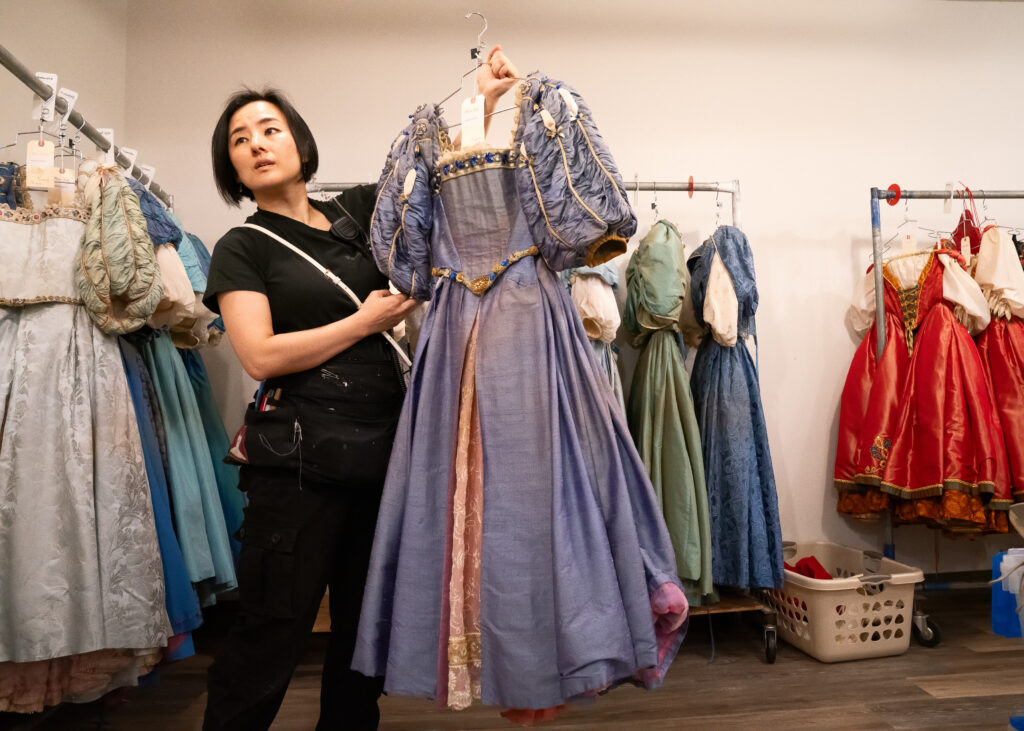
The corps has its own hair, makeup, and costume assistants to help with changes and make on-the-spot touch-ups and repairs.
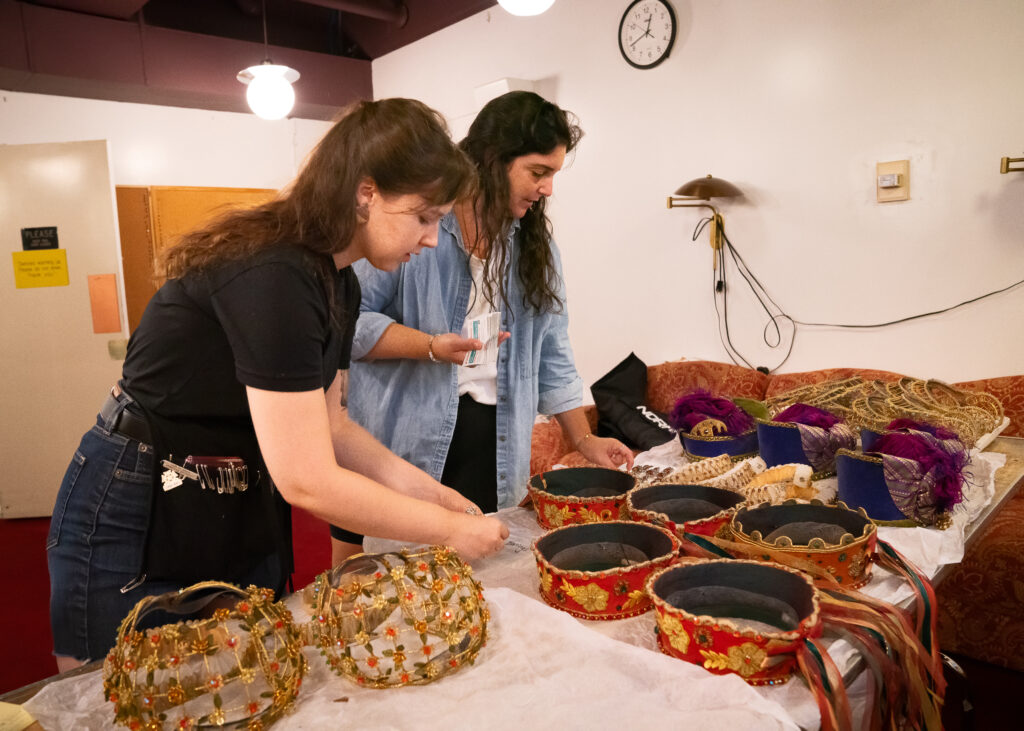
Production stage manager Danielle Ventimiglia is the wizard behind the curtain, in charge of everything from ensuring the marley is clean and the props are in place by curtain time to cueing the lights and troubleshooting mid-performance problems.
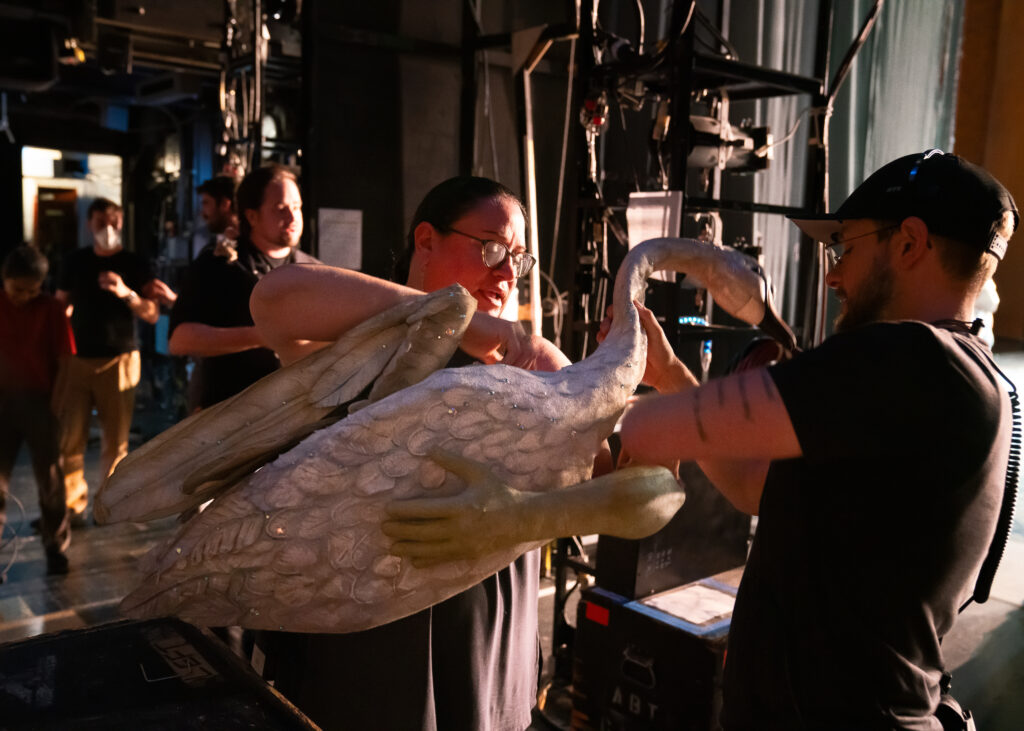
In the Prologue, von Rothbart wrestles with a swan puppet to dramatize Odette’s cursed transformation. “There’s nothing quite like it,” Ventimiglia quips of the puppet, a quirky contraption with a flexible neck, flapping wings controlled by internal levers—and a fake arm made of green rubber.
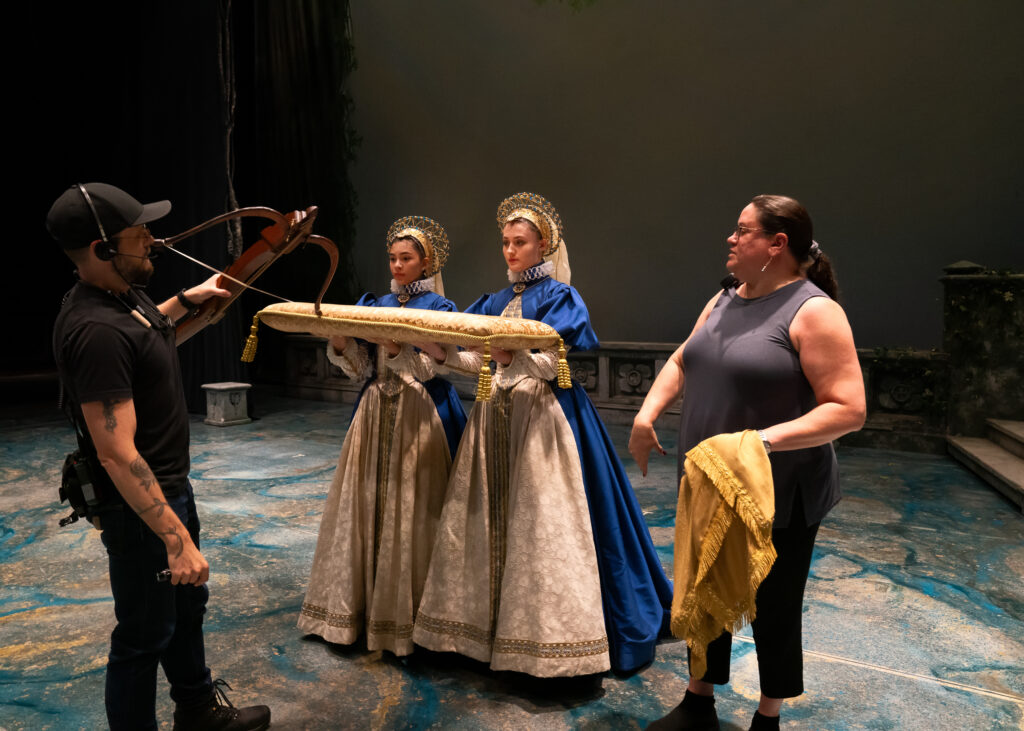
Siegfried receives his birthday crossbow from two of the Queen Mother’s attendants, often played by students of the ABT Jacqueline Kennedy Onassis School in their first mainstage roles. In this brief but tricky assignment, the dancers navigate narrow stairs, elbow to elbow and in heeled character shoes, each using one arm to support the 15-pound crossbow on its cushion and the other arm to lift their elaborate skirts so they don’t trip. “For safety, we try it without the crossbow first,” Ventimiglia says. “We want them to feel safe, so we’ll have them practice as many times as they need.”
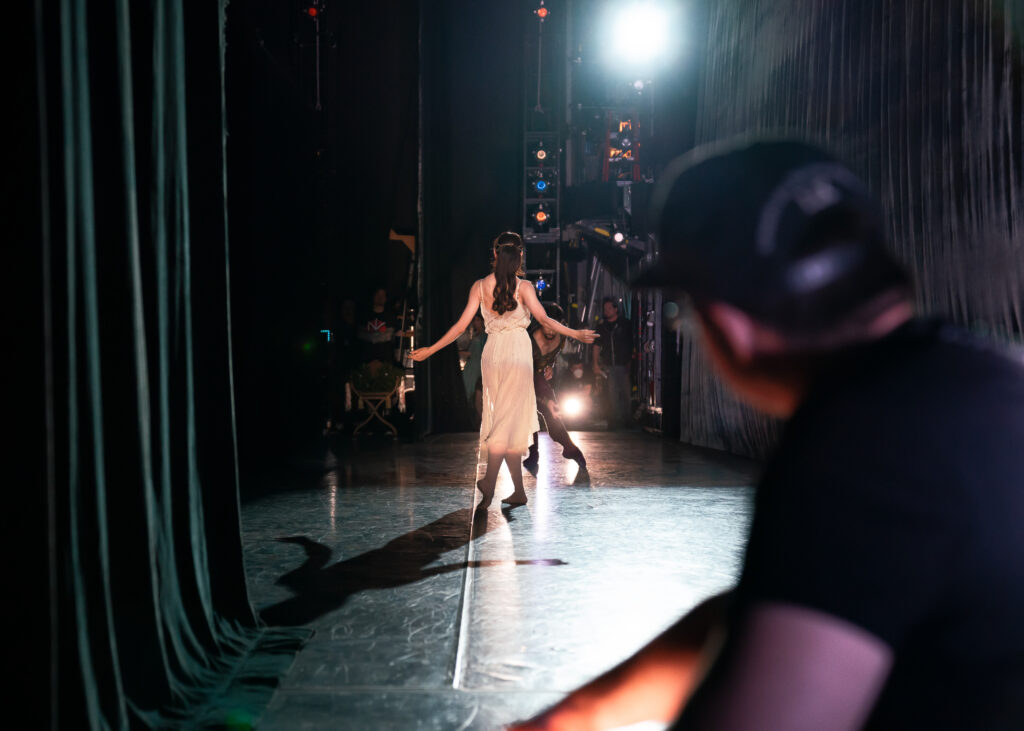
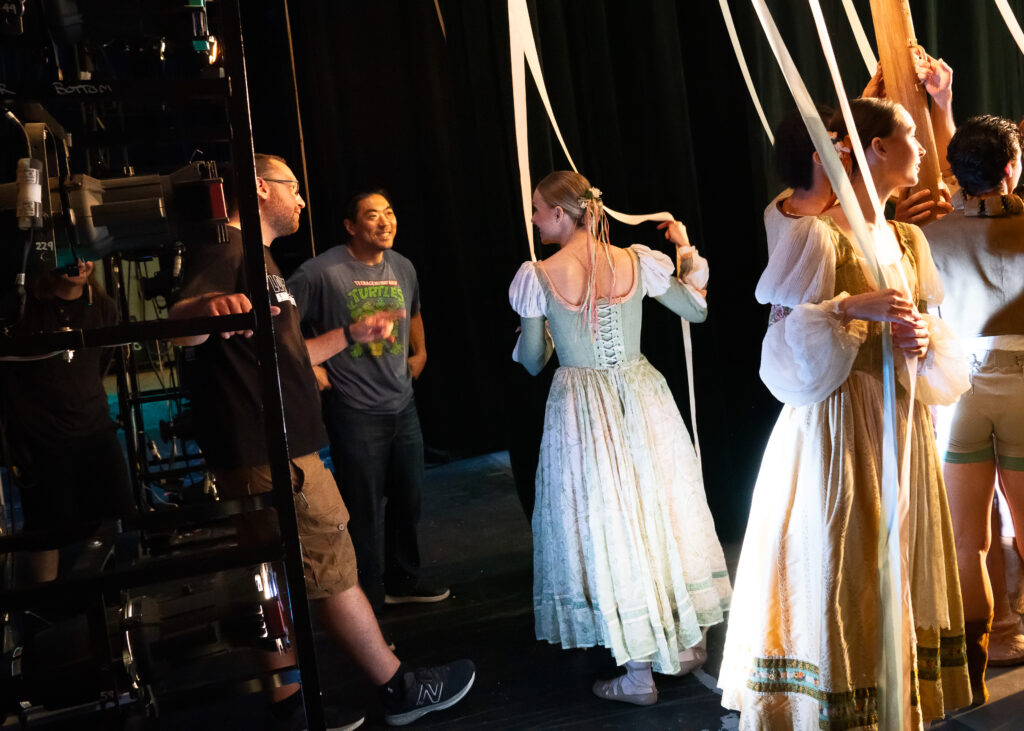
“You want the sky and the water to glow,” says lighting director Brad Fields. Fields worked with lighting designer Duane Schuler to devise low-tech, high-impact effects, such as attaching ribbons of iridescent fabric to the backdrops and using fans to make them ripple and shimmer.
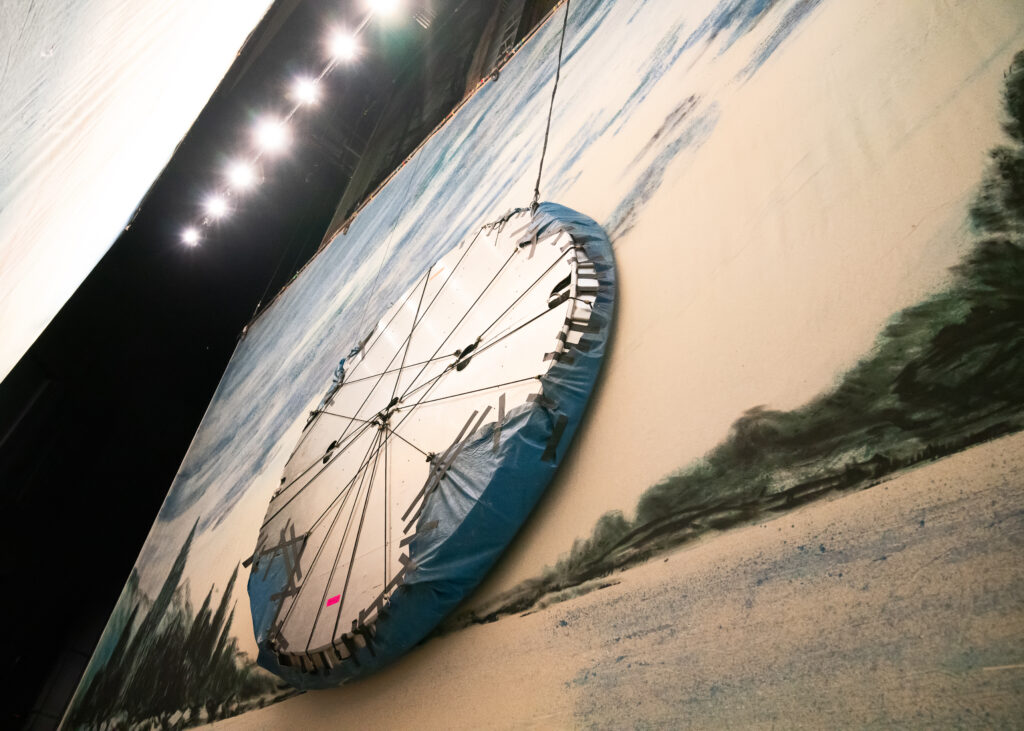
The luminous moon is another analog invention, created for the 2000 premiere: a circular lightbox suspended behind the backdrop, filled with 120 half-reflector bulbs and covered by projection-screen fabric that blurs the individual points of light.
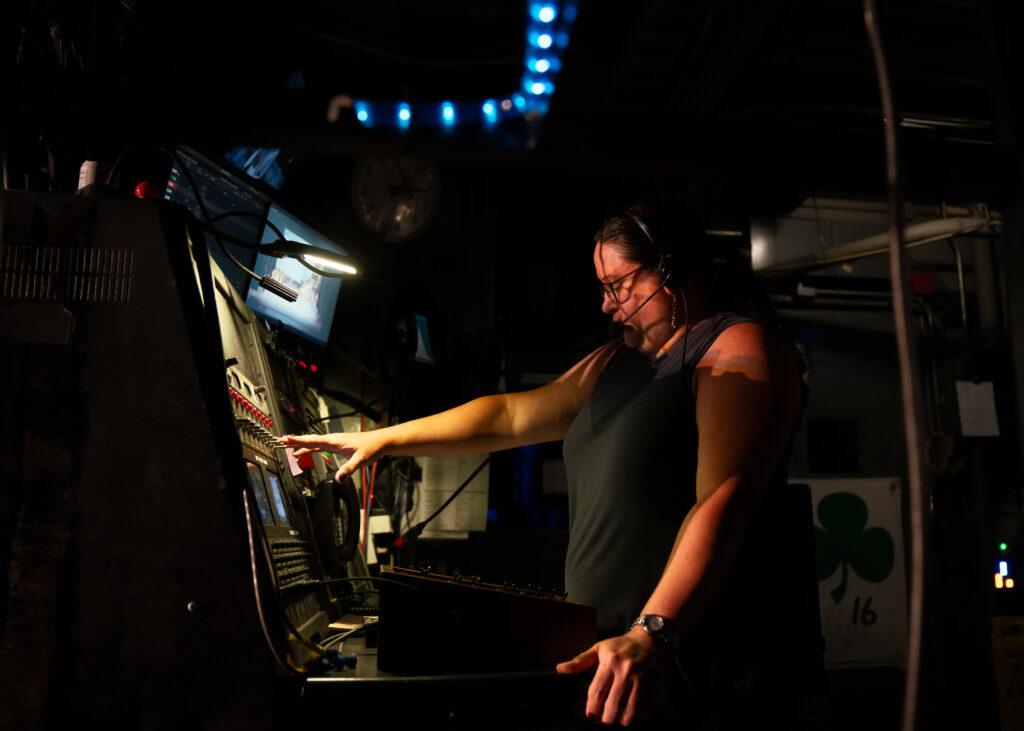
Fields describes the production’s 83 lighting cues as average and its 872 individual lighting fixtures as “a lot!” Two people control the scenic lighting via a push-button computer console, but the follow spots are still done manually, by specialists from the Metropolitan Opera.
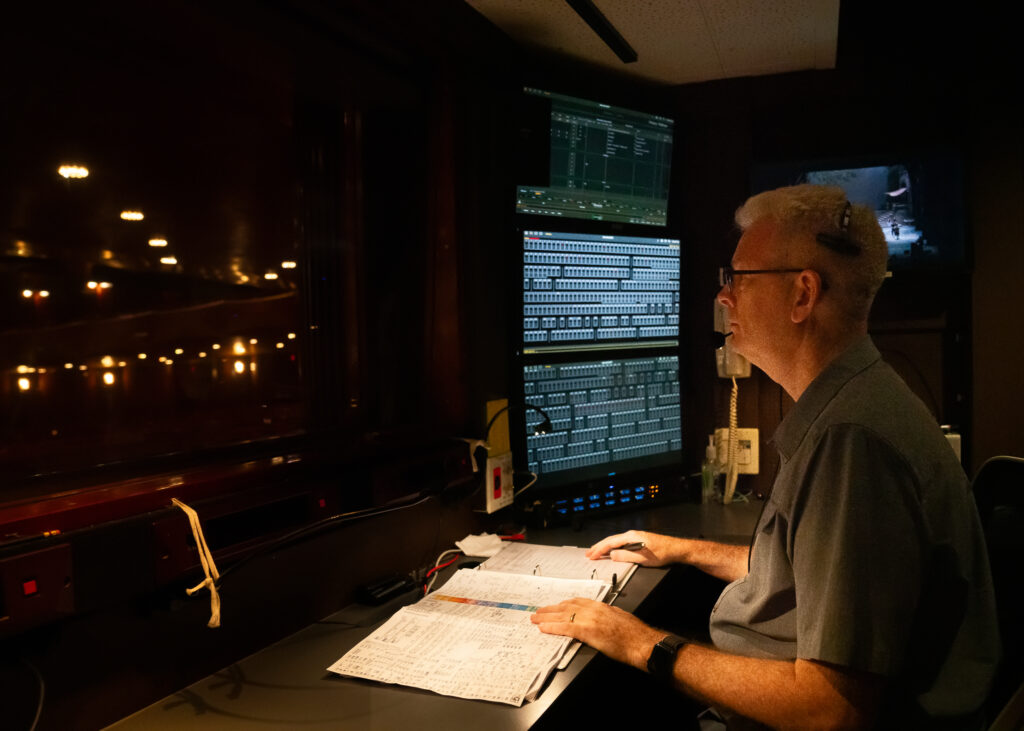
When Odette and Siegfried swan-dive off the rocks at the end of Act IV, they land on two thick gymnastics mats roped to a wooden base. “I don’t think my jump is that good, but it’s my favorite part,” Seo says. “I sometimes ask my dressers to film it.” After the stagehands whisk Odette offstage under a black cloth, they move the platform over by a few feet to catch Siegfried. “He’s more forceful, so he makes a bigger arc,” says Koch. “Over the years, we’ve learned how far each man will jump.”
